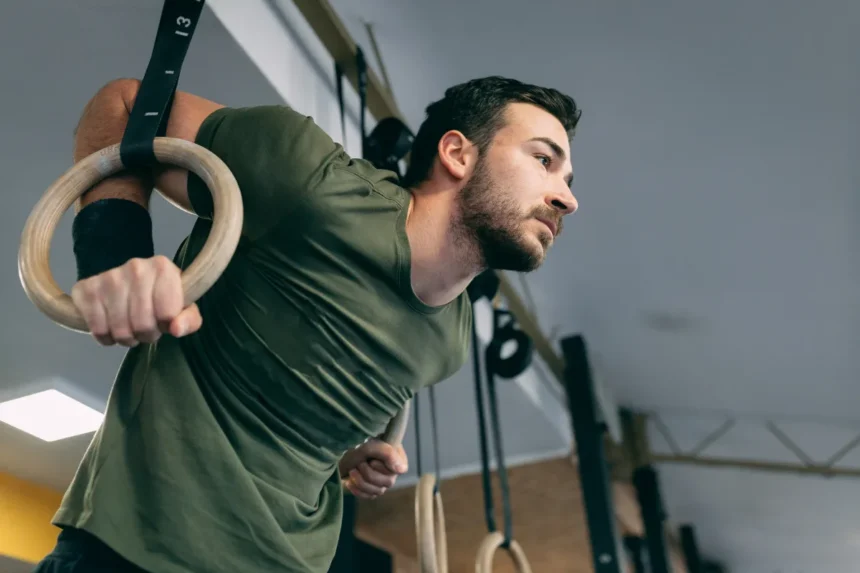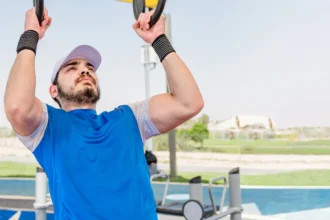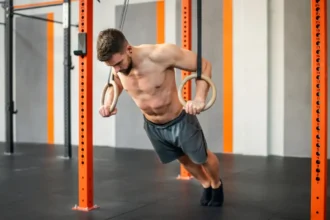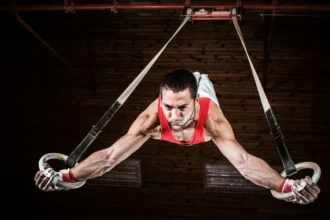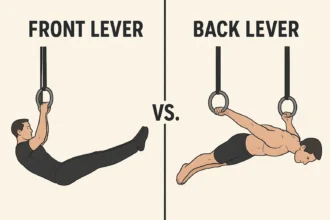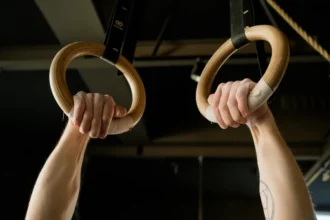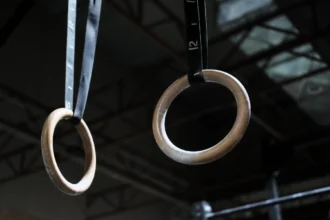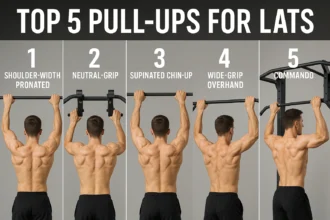When it comes to building strength with minimal equipment, gymnastics rings are in a league of their own. They’re portable, versatile, and capable of replacing an entire gym if you know how to use them.
With so many options, it can be overwhelming to figure out where to start. That’s why today we’re narrowing it down to the five essential ring exercises, covering your chest, back, shoulders, arms, legs, and even hamstrings. These exercises can be scaled for complete beginners and pushed to extreme difficulty for advanced athletes.
1. Ring Push-Ups
Push-ups are a staple in any program, but rings take them to another level. Because the rings move, your chest, shoulders, and triceps have to stabilize with every rep. You also get a deeper stretch than on the floor, which increases range of motion and muscle activation.
- Beginner: Walk your feet forward to create an incline. The more upright you are, the easier it gets.
- Intermediate: Perform strict push-ups with the rings just above the floor.
- Advanced: Progress toward Archer Push-Ups (where one arm works while the other assists with fewer and fewer fingers) or the One-Arm Push-Up. If shoulder strength is your goal, start training Pike Push-Ups that lead into Handstand Push-Ups on Rings.
Rings make it easy to measure progress, just move your feet forward or backward by body-part lengths (ankle, shin, knee, hip) to adjust the load.
2. Ring Rows (Horizontal Pulls)
If push-ups are your push foundation, rows are your pull. Ring rows build your lats, upper back, and arms while also teaching proper scapular control.
- Setup: Hang rings at hip height. Keep your body straight, knees bent at 90°, and pull your chest to the rings.
- Easier: Step your feet back to increase the angle.
- Harder: Walk forward until your back nearly touches the floor.
Once rows feel easy, move to Archer Rows (one arm does the work, the other assists slightly) and eventually to One-Arm Rows—a true test of pulling strength and anti-rotation stability.
3. Ring Dips
Dips are the classic chest, triceps, and shoulder builder. On rings, they become far more challenging because the instability demands stabilizer engagement.
- Beginner: Use your toes lightly on the floor, or attach resistance bands to assist.
- Intermediate: Strict ring dips with full depth—shoulders below elbows, arms locked out at the top.
- Advanced: Add weight, widen your grip, or try partner-resisted dips for extra overload.
Pro tip: At the top, rotate your arms outward slightly and push your shoulders down. This builds the support position you’ll need for advanced ring skills like the planche and back lever.
4. Ring Pull-Ups
No upper-body program is complete without pull-ups. Rings make them easier on your joints because your wrists can rotate naturally, reducing strain on the elbows and shoulders.
- Beginner: Use resistance bands for assistance, or keep one foot on the ground.
- Intermediate: Strict pull-ups with a pronated-to-supinated twist (palms forward at the bottom, palms facing you at the top).
- Advanced: Train toward the One-Arm Pull-Up using the same archer/finger-reduction method as with rows and push-ups. Add weight to continue progressing.
Ring pull-ups hit your back, biceps, and forearms hard, while the rotation helps keep tendons healthy.
5. Ring Leg & Hamstring Work
Most people forget rings aren’t just for the upper body. They can be a powerful leg-training tool.
- Pistol Squats (One-Leg Squats): Use the straps for balance as you work toward a full bodyweight pistol squat. Resistance bands can provide consistent assistance.
- Hamstring Curls: Lie on your back, heels in the rings, hips lifted. Curl your legs in and out. Move your feet further back to make it harder, or try single-leg curls for an advanced challenge.
Together, these cover your quads, glutes, and hamstrings, balancing out all the pushing and pulling.
Why These 5 Exercises?
These five movements cover every major muscle group in the body:
- Push-Ups/Dips: Chest, shoulders, triceps.
- Rows/Pull-Ups: Back, biceps, forearms.
- Pistols/Hamstring Curls: Legs and glutes.
Together, they form a complete gym ring system. Whether you’re a beginner just starting or an advanced athlete chasing one-arm skills, these are the foundation you’ll return to again and again.
Programming Your Ring Workout
Now that you know the five essentials, how do you structure them into a workout?
Option 1: Full Body (3 Days/Week)
Do all five exercises in each session. This works well if you only train a few days per week.
Option 2: Push/Pull Split
- Day 1: Push-Ups, Dips, Squats.
- Day 2: Rows, Pull-Ups, Hamstring Curls.
Reps & Sets:
- Stick with 3–4 sets per exercise.
- Choose a progression that lets you perform 3–15 reps per set.
- More reps = hypertrophy focus, fewer reps = strength focus.
Rest:
- Rest long enough to keep quality high—usually 1–3 minutes depending on intensity.
- Superset push and pull exercises (e.g., push-ups + rows) to save time without sacrificing performance.
Bottom Line: If you only had time for five gym ring exercises, make it these. Master them, progress them, and you’ll have everything you need to build strength, size, and athletic performance, no gym required.


